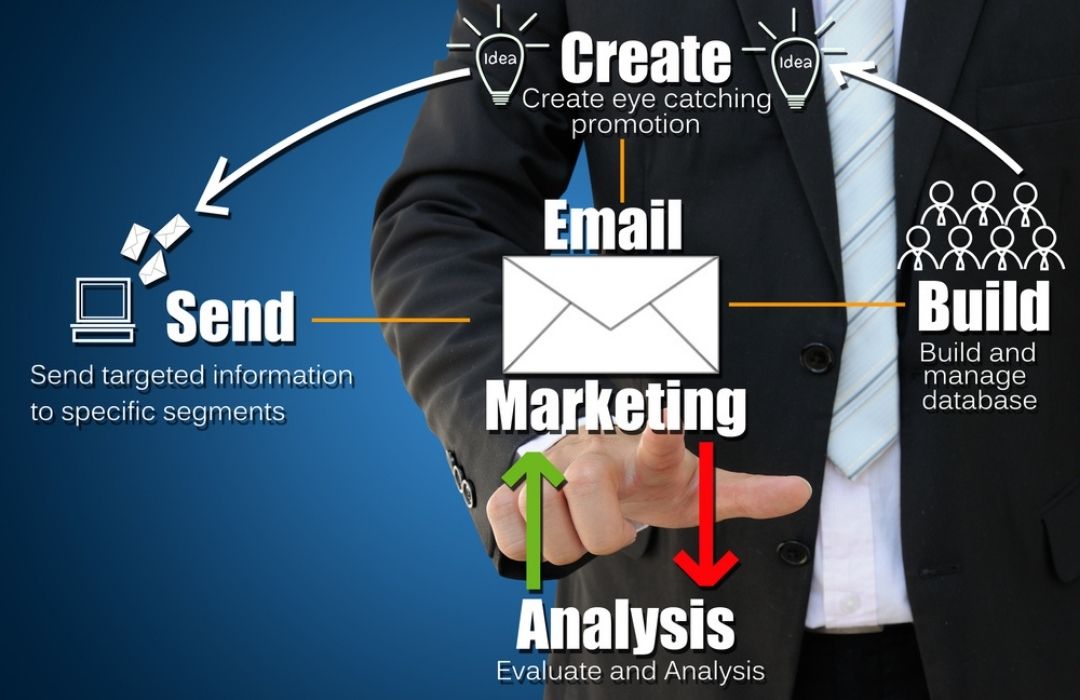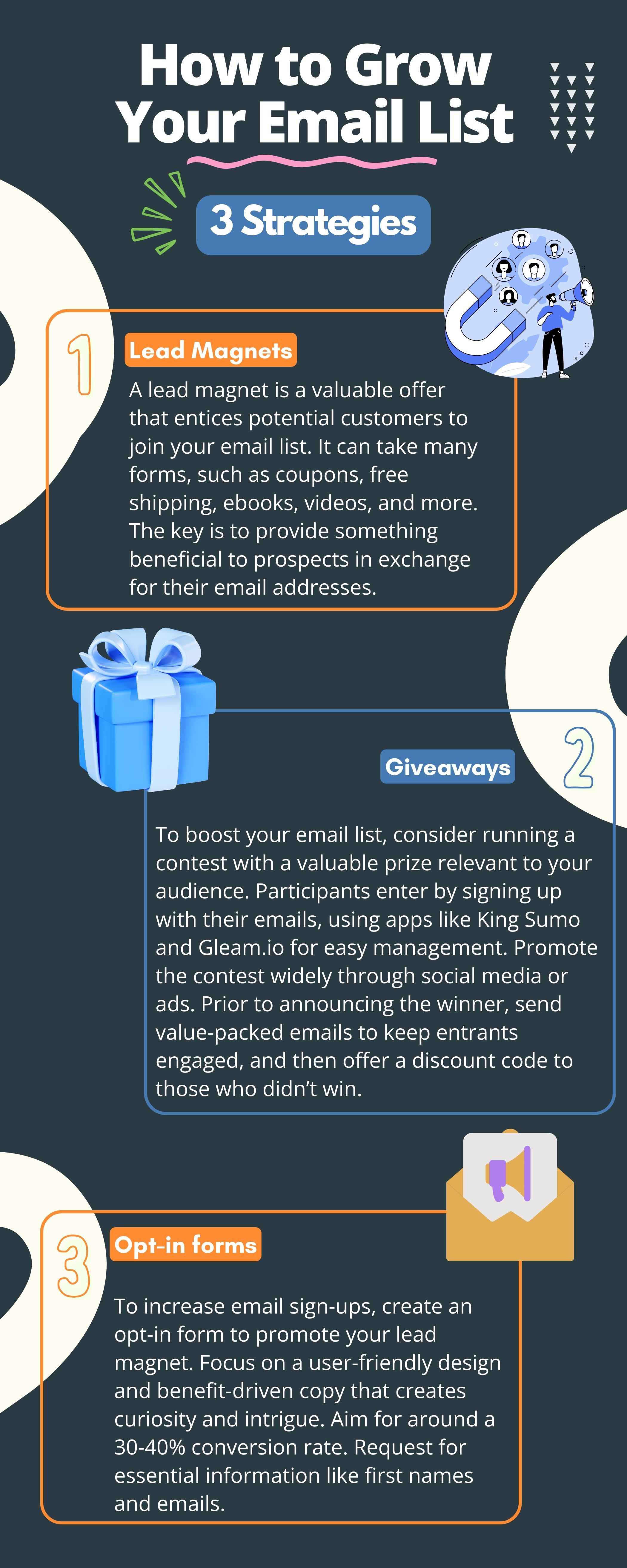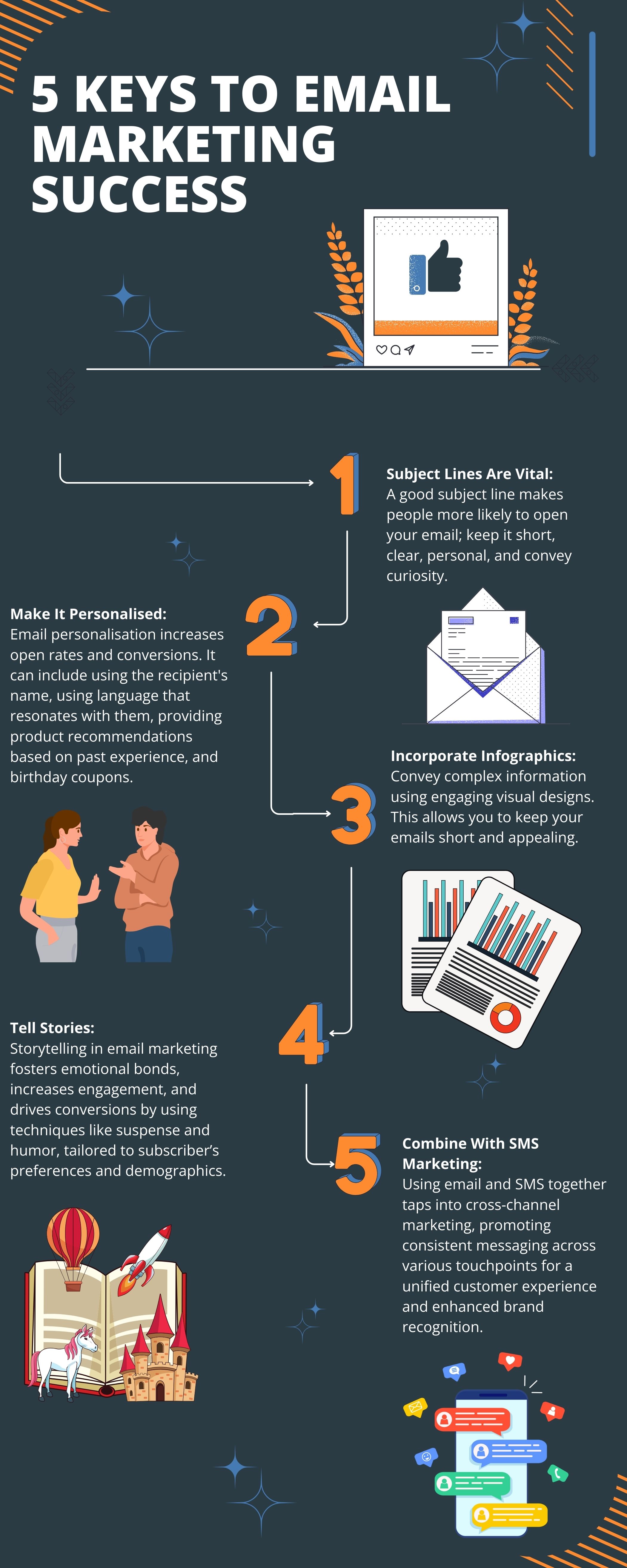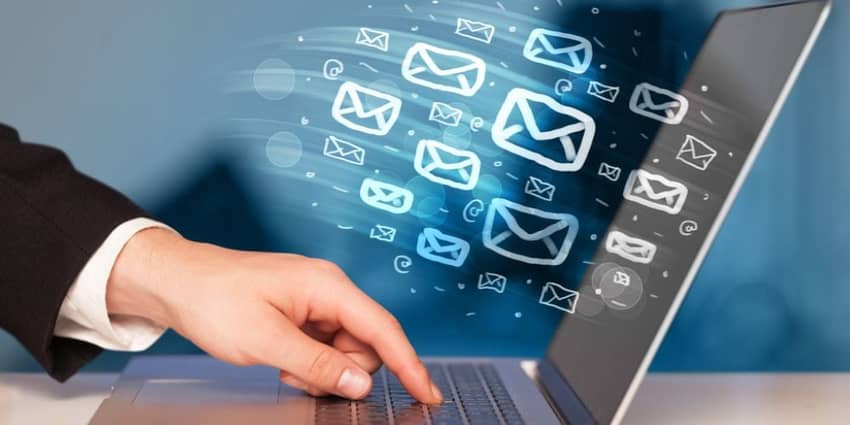The benefits of email marketing are undeniable.
A well-crafted email marketing strategy yields a remarkable return on investment, outperforming most other methods. A study by Litmus found it can be as high as $US36 ($AUD56) for every dollar spent.
But, achieving these results requires more than sporadic email dispatches. A consistently converting email marketing strategy demands the implementation of a series of tactics. These tactics serve as your arsenal, allowing you to meticulously adjust, measure, enhance and perpetuate outstanding subscriber experiences.
Simply put, it's no longer sufficient to send a couple of emails throughout the year randomly.
To help you get started, we've curated a set of essential strategies to elevate your campaigns into potent marketing assets. We'll delve into these strategies, equipping you with the knowledge and tools to unlock the full potential of your email marketing efforts.
What is Email Marketing
The objectives of email marketing extend beyond a standard form of communication to customers. It aims to foster robust customer relationships, bolster the visibility of products and services, fortify brand recognition, and, ultimately, propel sales to new heights.
What sets email marketing apart is its ability to forge a direct connection with your audience. This method combines affordability with meticulous tracking capabilities, offering a treasure trove of data for scrutinising and optimising campaign outcomes.

The Benefits of Email Marketing
There are over 4.3 billion email users worldwide. This makes email marketing an unrivalled platform for connecting with customers. But it’s also cost-efficient.
According to Hubspot, 51% of professionals claim email marketing is their most effective channel. More notably, in 2023, 53% of marketers will continue investing in this strategy, with 33% increasing their efforts.
But, perhaps the most compelling reason to embrace email marketing lies in ownership. You have complete control over this channel, subject only to compliance regulations.
How to Get Started With Email Marketing
Before diving headfirst into the email marketing world, let's outline some crucial steps to crafting a robust campaign designed to captivate and engage your subscribers.
Defining Your Audience
The foundation of successful emails, whether a full-fledged campaign or a single message, is understanding your target audience.
Just as in all aspects of marketing, begin by developing your buyer persona. Gain insights into their challenges and concerns, then customise your email campaign to cater to the specific needs of your audience.
Setting Goals
To kickstart your email marketing efforts effectively, set a SMART (Specific, Measurable, Attainable, Realistic, Time-Sensitive) goal. For instance, you could target a 5% increase in click-through rates for your emails by the end of the quarter. Specificity and measurability are crucial to knowing whether you've achieved the objective.
Also, determine the key performance indicators (KPIs) that directly correlate with your goal. In this case, your primary KPI would be the click-through rate. Starting with one objective allows you to focus your efforts and attain meaningful success.
Building an Email List
Your email list comprises people willingly agreeing to receive content from your business.
To build this list, you must provide various avenues for potential subscribers to opt in for your emails. Don't get disheartened if you start with a handful of people. Building it takes time. Meanwhile, cherish every subscriber and lead, as they are the seeds of organic growth for your email list.
Choosing Email Campaigns
Should you send a weekly newsletter, frequent new product announcements or selective sharing of blog posts? The answer is different for every business.
To choose the best one for your business, explore the various types of email campaigns available. This knowledge will empower you to tailor your choices to suit your unique audience. You can even consider different email lists for various types of content. This way, customers and prospects can opt-in for emails that specifically pertain to their interests, ensuring the relevant correspondence arrives in their inboxes.
Setting a Schedule
Determine your email contact frequency and communicate it clearly to your audience from the start. Providing this information upfront helps manage expectations, reducing the likelihood of high unsubscribe rates or your emails ending up in spam folders.
Consistency is critical once you've established a schedule. It fosters trust and keeps you in your audience's minds.
Measuring Results
Paying close attention to data and metrics allows you to make incremental adjustments to your emails, which can lead to significant improvements in results.
There are also specific KPIs to monitor that can give you further knowledge on evolving your email marketing strategy.
Tips for Choosing an Email Marketing Platform
Email marketing platforms are a valuable asset when refining strategies. The right tool can enable you to craft, personalise, and optimise professional-looking correspondence efficiently without designers or IT support.
A wide array of features is at your disposal to assist in creating high-quality email marketing campaigns and achieving your goals and objectives. Plus, you can assess the performance of your endeavours, allowing you to share critical data with your team.
How to Grow Your Email List
Growing an actively engaged list is pivotal in crafting an effective email marketing strategy. But, for many businesses, achieving this is easier than it sounds.
So, how can you entice individuals to share their email addresses and sign up willingly? The good news is that multiple strategies are at your disposal to facilitate the expansion of your email list.
Lead Magnets
A lead magnet attracts potential customers to your email list, typically through a complimentary offering. It can assume various forms, but it must deliver significant value to your prospects, and in return, they willingly provide their email addresses.
Therefore, choose a relevant lead magnet that enhances your prospects' lives. Here are a few examples of lead magnets you can develop:
- Coupons
- Free shipping
- Checklist
- Shopping guides
- Ebooks
- Samples
- Educational videos
- Webinars or courses
Giveaways
Another strategy to grow your email list is to run a contest with a prize of significant value and relevance to your customer. Participants are required to opt-in to your brand's emails to enter the contest, making it a low-barrier entry offer that appeals to your ideal customers.
The whole thing is easy to track and manage when you use apps like King Sumo and Gleam.io, which allow you to collect emails, grow your social media presence, and unveil the winner using a random generator.
You’ll want to do some significant promotion via social media or Google ads to let as many people as possible know about your competition. At the same time, before the prize is drawn, you should run an email campaign to provide value to those who have signed up so they don’t unsubscribe the second they find out they didn’t win.
Opt-in forms
Your opt-in form is the gateway between prospective leads and the emails you've crafted for their benefit. To encourage them to subscribe, consider the following tips:
- Design an attractive layout with an attention-grabbing header that aligns with your brand.
- Craft copy that remains relevant to the offer, ensuring transparency and honesty in your messaging.
- Keep the form straightforward and user-friendly, as it may be the initial interaction with your prospect.
- Request only essential information like the first name and email.
- Implement double confirmation for your opt-in form, enhancing subscriber trust and potentially improving open rates.
- Verify the form's functionality and user experience before launch to ensure a seamless and professional impression on your new leads.

How to Send Marketing Emails
Once you've successfully built a substantial list of subscribers eagerly awaiting your emails, it's essential to tread carefully to avoid ending up in the spam folder or getting blocked. Here are some crucial considerations to remember before you hit send on your first email campaign.
Segmentation
Segmenting your email list into distinct categories based on customer characteristics, interests, and preferences is crucial. All generic email blasts should be replaced with personalised communication tailored to each segment to treat subscribers as unique individuals.
Email marketing platforms allow you to organise your list based on factors like geographical location, lifecycle stage, industry, engagement history, language, job title and more.
Customisation is key, ensuring each subgroup receives exclusive, targeted content.
A/B Testing
Also known as split testing, A/B testing is a valuable method for assessing email performance by comparing the outcomes of email A against email B. This technique is handy when working with templates, as it allows you to gauge which version resonates better with your audience.
Here's a step-by-step guide for conducting A/B tests on your emails:
- Choose a single variable to test, such as the subject line, call-to-action (CTA) or images.
- Create two versions of the email: one with the variable in question and one without.
- Simultaneously send out both email versions for a specific duration.
- Analyse the results and retain the version that demonstrates superior performance.
- Proceed to test another variable and repeat the process.
Try to avoid informal A/B testing based on casual observations. Take a data-first approach that considers metrics like open rate, click-through rate, unsubscribe rate and sharing/forwarding rate.
Reviewing Performance
By delving into your email marketing analytics, you can make informed decisions to boost your performance and resonate with your subscribers and customers. Here are vital methods to assess the effectiveness of your email marketing campaigns:
- Deliverability: Gauge the success rate of your emails reaching subscribers' inboxes.
- Open Rate: Determine the percentage of recipients who open your emails.
- Clickthrough Rate: Measure the percentage of individuals who engage with your call-to-action buttons.
- Unsubscribes: Keep track of customers who opt out of your email list.
How to Automate Your Marketing Emails
Utilising automated emails offers an excellent opportunity to deliver personalised experiences to potential customers by leveraging data related to their behaviour or interactions.
The advantage lies in automation, eliminating the need for manual, one-off email correspondence and freeing up valuable time for other essential tasks.
Email automation is straightforward with the assistance of applications. The process involves creating a campaign and configuring a trigger, a predefined event, which initiates automated email sending when the designated event occurs.
For instance, welcome email automation is a crucial campaign triggered by actions like signing up for a newsletter. Setting up this automated workflow involves these essential steps:
- Select an email marketing tool: Choose a user-friendly email automation program.
- Configure an automation trigger: Define an event or condition that will activate the automated campaign, such as newsletter signups, abandoned carts, subscriber birthdays or a lack of engagement over a specific period.
- Create email campaigns: Craft the automated email incorporating elements like images, text, call-to-action buttons, discounts, logos and more. You can use AI tools like ChatGPT to assist in creating emails if you’re unsure what to say.
- Activate the automation: Choose the timing for sending and activating the automated campaign. Don’t forget to monitor its performance to identify areas for enhancement.
While setting up automated emails may seem tricky, utilising the right tool simplifies the process, even for beginners.
Expert Email Marketing Tips
Among the various guidelines for email marketing, one golden rule stands out as the most crucial: Treat the recipient as if you're communicating with a friend. This fundamental principle should remain at the forefront of your thinking when crafting autoresponders, lead magnets and subject lines. Utilise these other expert tips to gain further success in your email marketing strategy.
Subject Lines Are Vital
Crafting a compelling subject line is crucial because it's the initial element your subscribers encounter. Research from SuperOffice found that 33% of recipients open an email based solely on the subject line. So, dedicating time to refining it is crucial, as it can determine whether your emails receive a high click-through rate or none at all.
Aim to create subject lines that captivate attention without appearing overly promotional. Several key points to consider include limiting your subject line to 50-60 characters for readability, incorporating action-oriented words, setting clear expectations for the email's content, and personalising the subject line with subscriber names for a more tailored touch.
Make It Personal
Email personalisation contributes to a more tailored and individualised customer service journey. A simple technique like incorporating the recipient's first name in the subject line significantly increases open rates. Here are some other valuable email personalisation tips to consider:
- Tailor content recommendations based on your subscribers' past interactions.
- Suggest products aligned with your customers' previous purchases.
- Celebrate your subscribers' birthdays with personalised coupons.
- Optimise your sales funnel with automated and tailored messages.
- Recap client history like Spotify Wrapped to engage and delight your audience.
Incorporate Infographics
Using infographics can improve crucial metrics such as reduced unsubscribe rates, optimised conversion rates, email list growth, and enhanced future email open rates. Their visually engaging nature empowers marketers to convey complex information in a novel and compelling way.
They can serve various purposes within a marketing campaign and are adaptable to different stages. For instance, infographics can be used:
- In welcome emails to educate readers about your product or mission.
- At the campaign's outset, address a pain point experienced by your target audience.
- Throughout the nurturing phase, in a series of newsletters, present data or compare your product to competitors.
- In promotional emails to reinforce a call to action.
Additionally, infographics can be repurposed across various marketing channels, extending their reach and impact.
Tell Stories
The art of storytelling has emerged as a formidable tool in email marketing campaigns. It allows businesses to forge emotional bonds with their audience, boost engagement and open rates and ultimately drive conversions.
Effectively leveraging storytelling in email marketing encompasses techniques such as employing suspense, humour, or anecdotes to tap into readers' desires, fears and aspirations. Additionally, customising stories to align with individual subscribers' preferences, demographics, and interests can bring significant benefits.
Combine With SMS Marketing
Employing both email and SMS concurrently enables you to harness the potential of cross-channel marketing. This strategy involves the utilisation of multiple communication channels, including email, SMS, social media, mobile apps and others.
Cross-channel marketing allows you to engage your target audience through various touchpoints, fostering a unified and seamless customer experience. By integrating your text and email marketing strategies, you can ensure the delivery of consistent messaging, ultimately leading to greater brand recognition.

Start Building Your Email Marketing Strategy
In today's digital landscape, email marketing remains a powerful, cost-effective, and personal medium to forge direct connections with audiences. As we've explored in this guide, the potential return on investment is outstanding, but realising these gains requires a meticulous and holistic approach. From understanding your audience and crafting compelling content to integrating cutting-edge technologies and data-driven insights, the road to email marketing success is paved with strategic decisions.
It's not just about sending emails; it's about creating meaningful, personalised interactions that resonate with your subscribers. By combining the foundational strategies highlighted in this guide with a commitment to continuous learning and evolution, businesses can transform their email marketing campaigns into genuine money-making machines. Embrace this journey, and watch your business reach unparalleled heights in customer engagement and revenue growth.







.png)


 Facebook
Facebook Twitter
Twitter Instagram
Instagram Linked In
Linked In YouTube
YouTube